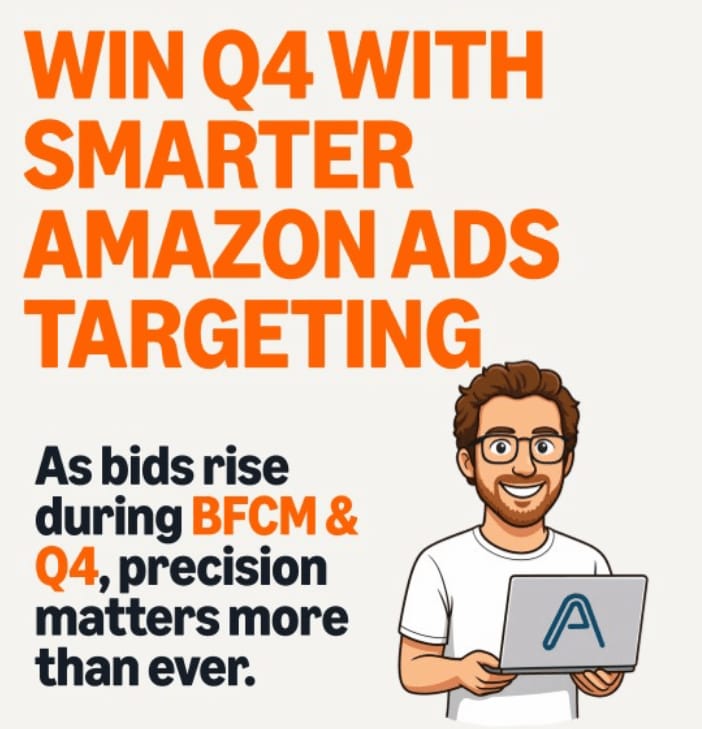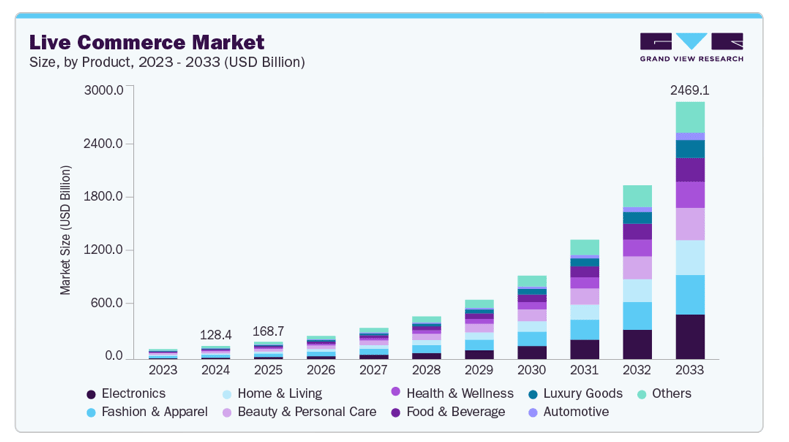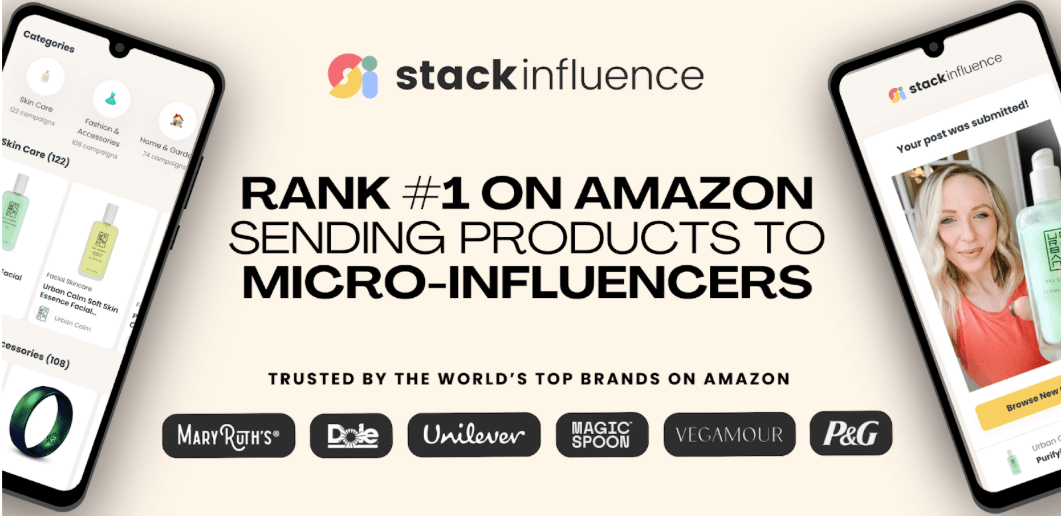- Billion Dollar Sellers
- Posts
- [ BDSN ] AI Skills every Amazon seller should use
[ BDSN ] AI Skills every Amazon seller should use

Wednesday, October 29 at 2pm EST, three of the top minds in AI for E-commerce will be on the monthly Expert Panel hosted by Kevin King inside the Billion Dollar Sellers Club (BDSC).
You are invited to join us!
 | STUMP BEZOSConsumers are expected to spend a record $13.1 billion on Halloween this year, eclipsing the previous record of $12.2 billion spent in 2023. How much of that spend is on costumes for pets? [ Answer at bottom of email ] |

💰 HOW to USE CLAUDE SKILLS for AMAZON SELLERS
Claude Skills changes everything for Amazon sellers workflow.
Claude Skills is the first real attempt at making AI remember how your business works, without you having to explain it every single time, and without needing complex code, RAG systems, or technical expertise to make it work.
This is the shift from prompting to packaging.
How Skills Actually Work (The Technical Part, Made Simple)
A Skill is essentially a permanent, self-activating module of specialized expertise that lives in your Claude account.
A Skill is a folder containing:
A Markdown file with instructions (SKILL.md)
Metadata that tells Claude when to activate automatically
Optional reference docs (brand guides, templates, data files)
Optional scripts (if you need calculations or logic)
You write the Skill in plain language. No code required (unless you want it).
When you make a request, Claude checks: "Is there a Skill for this?"
If yes, Claude loads the full instructions and resources. If no, Claude works normally.
This is called progressive disclosure. Claude doesn't load everything at once. It loads what's needed, when it's needed.
Your listing optimization Skill only loads when you're writing product descriptions. Your PPC analysis Skill only loads when you're reviewing campaign data. Your competitor research Skill only loads when you're analyzing market positioning.
Why This Beats Everything You're Currently Using
Before Skills: You open a chat, select your "Brand Voice" project, paste your product specs, explain your marketplace requirements, and ask Claude to write a listing.
With Skills: You open any chat and say: "Write an Amazon listing for this product." Your Brand Voice Skill, Amazon Listing Requirements Skill, and SEO Keyword Skill all activate automatically, coordinate together, and deliver a compliant, on-brand listing in your exact format.
No project selection. No pasted instructions. No re-explaining.

Real Example: Danny McMillan's Dashboard Generator
BDSS Dream 100 member Danny McMillan built something remarkable: an automated dashboard generator that transforms any Amazon seller data file into a professional, actionable dashboard in under 60 seconds.
With Danny's Skill:
Upload any Amazon data file (Search Terms, Business Reports, PPC data, etc.)
The Skill automatically detects the data type
Generates a complete dashboard with 4 tabs:
Overview: 6 key metrics at a glance
Explorer: Searchable data table
Funnel: Conversion visualization
Opportunities: Actionable insights
Done. Production-ready.
Real result from Danny's testing: 3,917 rows of Amazon PPC data → complete dashboard in 45 seconds. That's 60x faster than manual creation.
How to Install and Use Danny's Dashboard Skill
First, activate Skills in Claude (takes 30 seconds):
Go to Settings → Capabilities
Under the Experimental section, find "Skills" beneath "Code execution and file creation" (Code execution must be enabled)
Toggle on "Skills (Preview)"
The "Upload Skill" button appears
Now install Danny's Skill:
Download this dashboard file
Click "Upload Skill" in Claude's settings
Select the .zip file (no need to unzip it)
The Skill is now permanently installed in your account
Using the Skill:
Start a new conversation and use this example prompt:
"Claude, can you use the skills file to build me a dashboard using the attached search term report? Ensure you use the full design system."
The Skill works with any dashboard type: accounting data, ranking reports, Seller Central exports, PPC campaigns, inventory analysis, you name it.
Even if you have no idea what to do with the data or you've never built an app before, it handles the work.
Once it builds the dashboard, you can refine it: "Can you change this chart?" "Can we add conversion rates to that view?" "Make the funnel visualization more detailed."
From start to finish: 6-10 minutes, depending on file size.
Real-World Use Cases for Amazon Sellers
For Product Listing Optimization you could create a Skill that knows:
Your brand voice and tone guidelines
Each marketplace's requirements (Amazon vs. Walmart vs. TikTok Shop)
Your keyword strategy and density targets
Compliance requirements and prohibited claims
Your specific formatting preferences
Result: Feed it product specs, get back listings that match your exact formatting, hit the right keyword density, and maintain your brand voice. Tasks that currently take 30 minutes per product drop to 5 minutes.
For Customer Service at Scale, build a Skill containing:
Your return policies and exceptions
Shipping procedures and troubleshooting guides
Your specific customer service tone
Escalation protocols for different scenarios
VIP customer handling procedures
Result: The Skill handles edge cases automatically, like "customer bought the wrong size six months ago, used it twice, washed it wrong, but they're a VIP" without you making judgment calls every time.
For PPC Analysis and Optimization, create a Skill that understands:
Your ACOS targets by product category
Campaign structure preferences
Seasonal patterns in your business
Reporting format and key metrics
Budget allocation rules
Result: Upload your PPC data, get analysis and recommendations that match your exact business rules and profitability targets.
The shift is from operational AI to autonomous AI. From "AI can write a decent email if you hold its hand" to "AI orchestrates your entire knowledge base to complete actual work."
Skills represents a genuine step toward AI agents that understand your business context instead of requiring constant babysitting.
For Amazon sellers, this could be the difference between "we use AI for some stuff" and "AI handles substantial chunks of our operations while we focus on strategy and growth."
This is operational AI, not conversational AI.
Most sellers will keep prompting. Keep re-explaining. Keep hoping Claude "remembers" from three conversations ago. Keep hitting context limits mid-project.
Your competitors will package their knowledge once: their brand voice, their workflows, their SOPs, their specific business rules and move on. They'll do 6x more work per session. They'll maintain perfect consistency. They'll never re-explain anything.
The companies that figure out how to systematically capture their weird, specific, nobody-else-does-it-this-way knowledge through Skills will have serious operational advantages.
Getting Started:
Enable Skills in your Claude settings (Settings → Capabilities → Skills Preview)
Download Danny's Dashboard Generator Skill
Upload it and test with any Amazon data file
Start building your own Skills for your specific workflows
Stop re-explaining yourself. Start packaging your expertise.
Read the full detailed Notion document Danny created for you


🌎 INTERESTING STATS


🕹️ AMAZON WANTS to HELP SHOPPERS DECIDE
Amazon's newest AI shopping tool, "Help Me Decide," acts as a personalized product picker that analyzes a customer's browsing history, past purchases, and shopping patterns to recommend a single product with one tap. Instead of customers scrolling through dozens of similar items, the AI narrows it down to one recommendation, complete with an explanation of why it's the right choice.
The feature uses large language models (LLMs) powered by AWS services (Amazon Bedrock, OpenSearch, and SageMaker) to:
Analyze what customers have been browsing and searching
Review their purchase history and preferences
Match this data against product details and customer reviews
Generate a personalized recommendation with clear reasoning
For example, if a shopper has been looking at sleeping bags, camping stoves, and kids' hiking boots, Help Me Decide might recommend a four-season family tent and explain exactly why it fits their needs.
Availability: Mobile only (iOS, Android app, and mobile browser)
Reach: Millions of randomly selected U.S. customers
Access: Appears after customers browse several similar products, or via "Keep shopping for" on the homepage
Stage: Still in testing and expansion phase
This joins Amazon's growing AI toolkit including Rufus (AI shopping assistant), Shopping Guides, Amazon Lens, and Interests.
The stakes just changed again. In the search era, you fought for ranking. In the AI agent era, you're fighting to be the one product the AI recommends.

Here's what sellers should focus on:
1. Optimize for AI Understanding
Ensure your product titles, bullet points, and descriptions clearly communicate who your product is for and what problems it solves
Use precise, descriptive language that AI can parse to match shopper intent
Include contextual details (use cases, ideal customer profiles, compatibility)
2. Leverage Customer Reviews Strategically Help Me Decide pulls insights from reviews. Make sure you:
Actively encourage reviews from satisfied customers
Address negative feedback promptly
Highlight specific use cases and benefits that help AI understand your product
3. Build Better Data Signals
Your advertising targeting should align with actual customer needs
Use precise audience targeting and relevant keywords
Track what converts and double down on those signals
4. Think Beyond Keywords: Think Context The AI doesn't just look at what you rank for; it looks at whether your product genuinely fits the customer's shopping journey. Your product needs to make sense in context with what they've browsed and bought.
You won't meet the customer unless you pass the AI first. Help Me Decide is essentially compressing the shelf down to one choice. If your product aligns with shopper intent better than competitors, if it genuinely fits their needs based on their history and behavior, you win the conversion.
This is good news for sellers who've invested in quality listings, genuine customer satisfaction, and smart targeting. It rewards relevance over brute-force advertising spend.
Make sure your product can explain itself to both the AI and the customer. Because in this new era, being the right fit matters more than being the loudest voice.

🔗 BDSN MYSTERY LINK of the DAY 🔗

🚀 WIN Q4 with BETTER AMAZON ADS TARGETING
As Q4 approaches and Black Friday/Cyber Monday looms, Amazon sellers face their biggest challenge and opportunity of the year. Christian Umbach from Autopilot has a precision-focused targeting strategy that can help you navigate rising bid costs and fierce competition during the peak sales season.

The Foundation: Targets Come Before Keywords
Most sellers make a critical mistake: they start with search terms. But according to Umbach, effective targeting begins with defining your ideal targets first.
What makes a good target? Four key metrics:
Purchase Share: Above 4% of total purchases for the ASIN
Conversion Rate: Minimum 7% purchase-to-click ratio
Search Volume: At least 750 monthly searches
Cost Per Click: Maximum $0.90 per click
These benchmarks aren't universal rules, they're starting points. Your optimal thresholds will depend on your product's price point, margins, and historical performance. Use Amazon's Search Query Performance Report (SQPR) to extract this data and establish your baseline.

Leverage Search Query Performance Data Strategically
Once you've defined your target criteria, it's time to mine the SQPR for opportunities. This report is your roadmap to understanding what actually drives sales.
Three essential data practices:
Track Multiple Time Frames: Review weekly, monthly, and quarterly reports. Each provides up to 100 top keywords per ASIN, revealing both immediate trends and longer patterns.
Roll Up Child ASIN Data: Aggregate performance data at the parent ASIN level to identify broader trend patterns across your product variations.
Analyze Historical Seasonality: Look back up to 18 months to spot seasonal keyword shifts. For example, "stocking stuffers" might spike in early December, while "Christmas party supplies" peaks mid-month, followed by "New Year's party supplies" in late December.
Make Targeting Manageable
With rising bids during BFCM and Q4, precision matters more than ever. Here's how to stay organized:
Group Similar ASINs: Cluster products with similar ad filter patterns together. This makes campaign management more efficient while maintaining relevance.
Set Performance-Based Thresholds: Define clear benchmarks for when to adjust bids, pause keywords, or scale successful targets.
Adjust Weekly: The Q4 landscape changes rapidly. Weekly optimization sessions keep you responsive to shifting demand and competition.

Seasonal Keywords: Your Q4 Advantage
Seasonal search behavior compounds quickly—often within 2-4 weeks. Understanding these shifts gives you a crucial edge.
The key is anticipating the evolution of search intent. A shopper searching "stocking stuffers" in early November has different purchase timing than someone searching the same term in mid-December. Your targeting should reflect this urgency.
Actionable tip: Review your December 2024 SQPR data now to inform your December 2025 strategy. Seasonal trends repeat, and your learnings become next year's competitive advantage.
Turn Higher Bids into Higher Returns
Yes, bids rise during Q4. But with a focused strategy, you can turn increased costs into profitable growth.
The goal isn't to chase every keyword—it's to capture the right traffic at the right time. By defining clear target parameters, leveraging comprehensive SQPR data, and staying agile with weekly adjustments, you build both precision and profitability into your campaigns.
Your Q4 action plan:
Define your target thresholds this week (purchase share, conversion rate, search volume, CPC)
Pull 18 months of SQPR data to identify seasonal patterns
Group ASINs with similar characteristics for efficient management
Schedule weekly optimization sessions through the end of the year
Monitor and swap keywords quickly as seasonal intent shifts
As Umbach emphasizes: experience with the data builds confidence to expand your filters while maintaining profitability. Start conservative with your criteria, track results, and gradually broaden as you validate what works.
The holiday season waits for no one. Refine your targets now, and capture peak-season traffic when it matters most.

Reach page 1 on Amazon simply by sending free products to Micro-Influencers
Use the platform Stack Influence to automate Micro-Influencer product seeding collaborations at scale (get thousands of collabs per month) and increase your Amazon ranking, generate UGC, and boost up your recurring revenue like never before.
Top Amazon brands like Magic Spoon, Unilever, and MaryRuth Organics have been able to get to #1 page positioning on Amazon and increase their monthly revenue as high as 13X in as little as 2 months.
Pay influencers only with products (stop negotiating fees)
Increase external traffic Amazon sales (get to top page rankings)
Get full rights image/video UGC (build your brand with authentic content)
100% automated management (don’t lift a finger to get influencer collabs at scale)
Don't believe it? Check out the results from the Blueland Micro Influencer campaign which generated a 13X ROI scaling up influencers on Amazon.
After successfully raising investment on Shark Tank, Blueland turned to Stack Influence to boost their Amazon sales and become a top selling listing using Micro Influencer marketing.
Increase your Amazon listings ranking for targeted keywords and multiply your organic recurring revenue in 2025!
Get 10% OFF by signing up this month

📺 WILL LIVE SHOPPING, NOT AI, DEFINE ECOM’s FUTURE?
While everyone's talking about AI revolutionizing e-commerce, savvy sellers are quietly preparing for a different shift, one that prioritizes human connection over automation.
The Trust Crisis AI Created
We're drowning in synthetic content. AI has made it nearly impossible to distinguish real from fake online, and consumers are exhausted. They're craving something AI can't deliver: authentic human interaction in real-time.

Enter live shopping: the messy, unscripted format that's about to reshape how products are sold online.
The Numbers Don't Lie
The global live commerce market was valued at $128.42 billion in 2024. By 2033, analysts project it will explode to $2.47 trillion, a staggering 39.9% annual growth rate.
In the U.S. specifically, live commerce is expected to grow at 37.2% annually through 2033. While China already sees over 25% of e-commerce sales through live shopping, America is just getting started. And early adopters always win.

Two fundamental shifts are converging:
Attention has moved to live streaming. Platforms like Twitch, TikTok Live, and YouTube Live aren't just popular, they're dominant among younger generations. Creators like Kai Cenat have built empires on unedited, authentic live content. A live view is worth significantly more than a produced view.
Authenticity has become the scarcest commodity. In a marketplace flooded with AI-generated ads and synthetic content, live shopping offers something you can't fake: real people demonstrating real products in real-time.\
Success in live commerce requires four elements:
Strong hosts who can authentically connect with audiences—whether that's founders, influencers, or skilled presenters.
Strategic support behind the scenes to plan themes, craft offers, and track performance. Live shopping isn't just "going live" - it's retail theater meets performance marketing.
Content repurposing that turns every live session into clips, social posts, and evergreen ad creative.
Platform integration as Meta, TikTok, and others carve out dedicated space for live commerce and reward brands that drive strong conversions.
By 2030, live shopping won't be optional for e-commerce brands, it will be essential. The sellers who invest now in people, content, and systems will capture the same early-mover advantages that Facebook and Instagram advertisers enjoyed a decade ago.
AI will continue to automate the mundane. But in a world of synthetic content, the brands that win will be the ones building real communities who show up live, feel connected, and buy in real-time.
This is your three-year warning. The question isn't whether live shopping will transform e-commerce, it's whether you'll be ready when it does.

🔥 MORE HOT PICKS 🔥
🥃 PARTING SHOT
“Leaves are falling, opportunities are calling.”
✌🏼 See you again Thursday …
The answer to today’s STUMP BEZOS is
$860 million will be spent on pet costumes for Halloween



